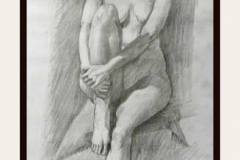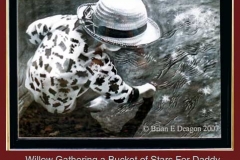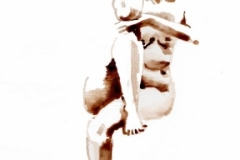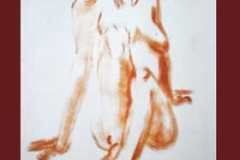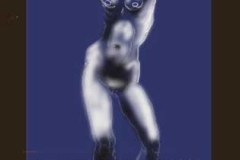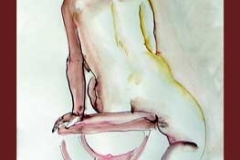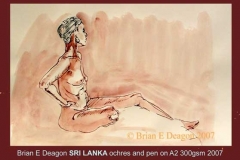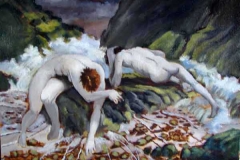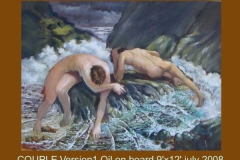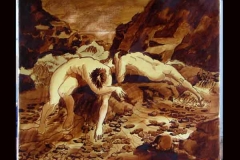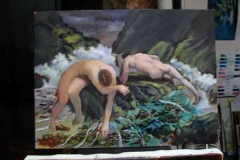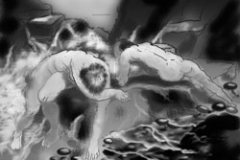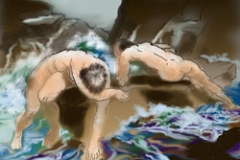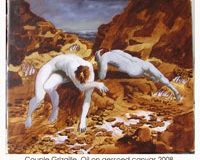Category Archives: Blog
Greenberg and collage
Related Images:
After the football
Related Images:
New York
Costa Vavagiakis gave me drawing 101.
Related Images:
Juliette Aristedes
In Classical Painting Atelier the assertion is made that “Classical” painting is based on Knowledge, Logic and Order. Consider the alternative. Art based on ignorance, irrationality and chaos. And that is exactly what has occurred. This is not to imply that art based on either proposition is superior to the other,it is just that the two worldviews may be incompatible.
Related Images:
Spit and Polish
I have mused about the cultures that tend to Realism before. The Dutch invented the stock market and still life and exported both to Boston and New York. Academic Realism that Americans preserve from C19 English Empire and C19 French Academies, has the same love of detailed “finish”. . The passion for accurate detail gave Florence double entry bookkeeping and Botticelli, and America its utilitarianism and Andrew Wyeth. They bring the same aesthetic to the nude as they do to chrome automobiles.
This realisation about the limits of realism came to me in Boston, where gallery after gallery displayed the same, beautifully painted bowl of strawberries on a white plate. The problem was, they were all by different artists. The aesthetics and ethics of mass production! Polished highlights on surfaces everywhere, and the artist has become an interchangeable part.
A similar problem bothers me with the academy drawing. So long as it is understood from the first mark, that this drawing is a learning experience, not a work of “Art”. The question “What does a nude do?” is followed by ” When is a nude finished?”
Its gratifying to be agreed with. This comment from Brian Froud says he “gets”it. “I’m always amazed when I look at American fantasy art. Its over-rendered. Every surface is shiny so your eye skids off the art. So do your emotions”
Related Images:
Kant and Heidegger
Imagine God behind a screen and us in front of it. Kant says we have invented the screen upon which we project the world. God is unknowable behind it. Heidegger says God made the screen, but in an odd twist he says the screen projects or creates us.God is equally hidden behind the screen.
These are the antecedents of contemporary philosophy, and its introspection and irrelevant God. I am still struggling with its impact on the visual arts, but starting with Foucault.
Critique of Foucault is like attacking a fog. Armed and alarmed, I wield simile and metaphor extended, spinning and kicking, hoping a knife will pierce the heart of the fog.
Related Images:
Reenter calligraphy
My large Kundulomdulom is calligraphic in tonal acrylic.
If I look at my Tachiste work from 1966 I see continuity.
Related Images:
Rarrk
Documentary on Marwundjul. He states that he “saw” rarrk in the flashes of light on the water. I know what that is, but wont paint it. I have always been and feel balanda. But I have seen ,”me myself” rarrk in the criss-cross of palm fronds. Here, completely at home in the tetrachrome palette I can see a way to abstraction that is mine, and not needing ceremonial validity.
I should mention here, that I had the privilege of being taught by Marwundjul on a visit to Maningrida.He said, that as an artist I was “a bit rusty rough one”
Related Images:
Ryan’s Tips
Hold your painting up so that visually it is adjacent to what you are painting. Make sure the light on the painting and the subject are consistent. Now you can mix a colour , place a little patch on the edge of your canvas, and directly compare it with the colour in the scene you are trying to match.
Hold your thumb over a patch of colour so its shadow falls on your patch. The tone and colour is exactly what is reqiured for the next tone down in painting your object.
Colour Matching. Choose the closest colour youve got and mix it to the correct tone. Select the colour immediately beside on the colour wheel on the side you want to shift. Mix this to the correct tone. Now mix the colour. Some adjustment for chroma may be required.
